This fertile path of investigation
should now be followed to the solstice
and beyond:
|
APRIL 14 (104 = 4 * 22 + 16 = 2
* 52) |
155 |
SEPT 17 (260) |
11 |
SEPT 29 (272 = 4 * 64 + 16 = 4
* 68) |
7 |
OCT 7 (280) |
|
 |
 |
 |
 |
|
Ga1-24 |
Ga7-11
(180) |
Ga7-23 (280 - 88) |
Ga7-31 (200) |
|
June 17 (168 = 2 * 84) |
Nov 20 (*244) |
Dec 2 (336 = 4 * 84) |
Dec 10 (*264) |
|
BETELGEUZE (*88) |
ν Scorpii |
CUJAM (*256) |
υ (325) Scorpii |
|
157 = 314 / 2 |
20 = 420 / 21 |
|
177 = 6 * 29½ = 472 - 295
|
|
55 |
DEC 2
(336 = 400 - 64)
= 320 + 16 |
18 |
SOLSTICE |
|
 |
 |
|
Gb2-1 (256 = 4 * 64 =
336 - 80 = 4 * 84 - 4 *
20) |
Gb2-20 (275) |
|
Febr
4 (400 = 4 * 100 = 80 +
320 = 4 * 20 + 4 * 80) |
Terminalia |
|
DRAMASA
(*320.0 = 400 - 80)
= 336 - 16 |
CASTOR |
|
...
In Hindu legend there
was a mother goddess
called Aditi, who
had seven offspring. She
is called 'Mother of the
Gods'. Aditi,
whose name means 'free,
unbounded, infinity' was
assigned in the ancient
lists of constellations
as the regent of the
asterism Punarvasu.
Punarvasu is dual
in form and means 'The
Doublegood Pair'. The
singular form of this
noun is used to refer to
the star Pollux. It is
not difficult to surmise
that the other member of
the Doublegood Pair was
Castor. Then the
constellation
Punarvasu is quite
equivalent to our
Gemini, the Twins. In
far antiquity (5800 BC)
the spring equinoctial
point was predicted by
the heliacal rising of
the Twins ... |
|
20 |
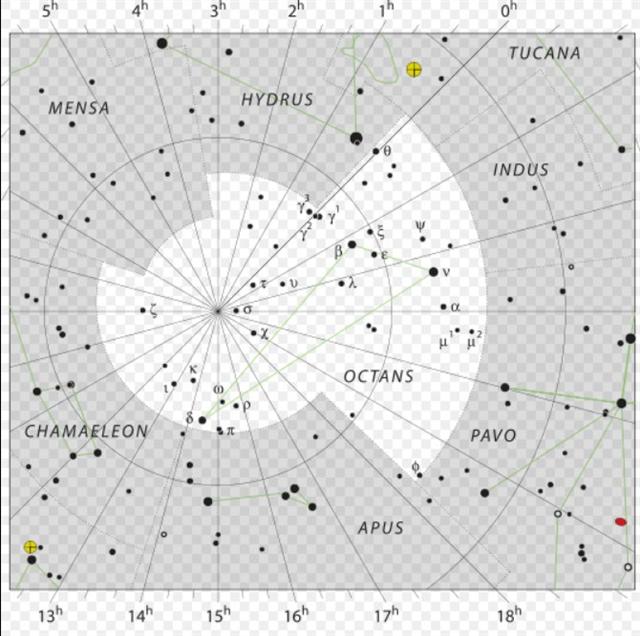 |
... In Greek and Roman
mythology, Castor
and Pollux or
Polydeuces were twin
brothers, together known as the
Dioscuri. Their mother
was Leda, but Castor was the
mortal son of Tyndareus, king of
Sparta, and Pollux the divine
son of Zeus, who visited Leda in
the guise of a swan. Though
accounts of their birth are
varied, they are sometimes said
to have been born from an egg,
along with their twin sisters
Helen of Troy and Clytemnestra.
In Latin the twins are also
known as the Gemini or
Castores. When Castor was
killed, Pollux asked Zeus to let
him share his own immortality
with his twin to keep them
together, and they were
transformed into the
constellation Gemini. The pair
was regarded as the patrons of
sailors, to whom they appeared
as
St. Elmo's fire, and were
also associated with
horsemanship ...

|
DEC 22 |
23 (*277) |
CHRISTMAS EVE |
25 |
26 (360) |
57 |
|
...
The evening of 23 June,
St. John's Eve, is the
eve of celebration
before the Feast Day of
Saint John the Baptist.
The Gospel of Luke (Luke
1:36, 56-57) states that
John was born about six
months before Jesus;
therefore, the feast of
John the Baptist was
fixed on 24 June, six
months before Christmas
Eve ... |
 |
 |
 |
 |
 |
|
Gb2-21 |
Gb2-22 |
Gb2-23 (229 + 49) |
Gb2-24 |
Gb2-25 (280) |
|
... The leap day was
introduced as part of
the Julian reform. The
day following the
Terminalia (February 23)
was doubled, forming the
'bis sextum -
literally 'double
sixth', since February
24 was 'the sixth day
before the Kalends of
March' using Roman
inclusive counting
(March 1 was the 'first
day') ... |
|
δ Tucanae (340.1), ρ Cephei (340.2), ν Gruis
(340.3),
ζ Aquarii, δ Gruis
(340.4), 5/1100 Lac. (340.7), σ Aquarii, 6/650 Lac. (340.9)
PROCYON (α Canis
Minoris)
*299.0 = *340.4 - *41.4 |
υ Oct. (341.0), α/91
Lac. (341.1),
HOMAN (Hero) = ζ Pegasi,
β Piscis Austrini
(341.2), ν Tucanae
(341.5), υ Aquarii
(341.9) |
η Aquarii (342.1),
σ Gruis (342.4),
SITULA (Water-jar) = κ
Aquarii
(342.7)
*301.0 = *342.4 - *41.4 |
ε Piscis Austrini
(343.5), ο Pegasi, β
Gruis (343.8) |
ρ Gruis (344.0),
MATAR (Rain) = η Pegasi
(344.2), η Gruis
(344.6), β Oct. (344.7) |
|
Bissextum |
Febr 25
(*341) |
26 |
27 (58) |
28 (424) |
|
°Febr 20 |
21 (52) |
22 |
Terminalia |
24 (420) |
|
'Jan 28 (393) |
29 (*314) |
30 |
31 |
'Febr 1 |
|
"Jan 14 |
15 (*300) |
16 |
17 |
18
(383) |
|
CLOSE TO THE FULL MOON: |
|
JUNE 22 |
23 |
ST JOHN'S DAY |
25 (*96) |
26 (177) |
|
...
The month, which takes
its name from Juppiter
the oak-god, begins on
June 10th [10/6 = 10/26
- 16] and ends of
July 7th. Midway comes
St. John's Day, June
24th, the day on which
the oak-king was
sacrificially burned
alive. The Celtic year
was divided into two
halves with the second
half beginning in July,
apparently after a
seven-day wake, or
funeral feast, in the
oak-king's honour ...
.jpg) |
|
Extended Net-26b (Ox)
μ Hydrae
(157.1) |
Maru-sha-arkat-Sharru-15
(4th Son behind the
King)
SHIR (Possessing
Luminous Rays)
=
ρ
Leonis
(158.9) |
p Carinae (159.3) |
φ Hydrae (160.3) |
No star listed (161) |
|
Aug 25 (237) |
26 |
27 |
28 |
29 (*161) |
|
°Aug 21 (233) |
22 |
23 |
24 |
25 (*157) |
|
'July 29 (*130) |
30 |
31 |
'Aug 1 |
2 (214) |
|
"July 15 |
16 |
17 (*118) |
18 |
19 (200) |
|
FEBR 22 |
TERMINALIA |
24 (*340) |
25
(56) |
26 (422) |
 |
 |
 |
 |
 |
|
Gb4-18 |
Gb4-19 |
Gb4-20 (111) |
Gb4-21 |
Gb4-22 (342) |
|
ν Ceti (37.9) |
ν Arietis (38.5), δ, ε
Ceti (38.8) |
μ Arietis (39.4), HEAD
OF THE FLY = 35 Arietis
(39.6),
KAFFALJIDHMA (Part of a
Hand) = γ Ceti,
θ
Persei (39.8)
*363.0
= *39.4 - *41.4 |
π
Ceti,
ο
Arietis (40.0),
ANGETENAR (Bend in the
River) = τ¹ Eridani,
μ
Ceti (40.2),
RIGHT WING = 39 Arietis
(40.9) |
Bharani-2 (Yoni) /
Stomach-17 (Pheasant)
π
Arietis (41.2),
MIRAM (Next to the
Pleiades) = η Persei
(41.3),
BHARANI = 41 Arietis
(41.4),
τ²
Eridani,
σ
Arietis (41.7) |
|
April 27 |
28 (118) |
29 (484) |
30 |
May 1 (*41) |
|
°April 23 |
24 (114) |
25
(480) |
26 (*36) |
27 |
|
'March 31 (455) |
'April 1 (91) |
2 |
3 (*13) |
4 |
|
"March 17 |
18 |
19 (78) |
20 (444) |
0h (*365) |
|
CLOSE TO THE FULL MOON: |
|
AUG 24 (2 * 118) |
25
(*157) |
26 |
27 |
28 |
|
σ Bootis (220.2),
η Centauri (220.4)
*179.0
= *220.4 - *41.4 |
ρ Lupi (221.0),
TOLIMAN = α Centauri
(221.2), π Bootis
(221.8), ζ Bootis
(221.9) |
31 Bootis
(222.0),
YANG MUN (South Gate) =
α Lupi
(222.1),
RIJL AL AWWA (Foot of
the Barker) = μ Virginis
(222.5),
ο
Bootis (222.9) |
IZAR (Girdle) = ε Bootis
(223.0),
109 Virginis,
α
Apodis (223.3),
μ
Librae (223.8) |
Al Zubānā-14a (Claws) /
Visakha-16 (Forked) /
Root-3 (Badger)
ZUBEN ELGENUBI (Southern
Claw) = α Librae
(224.2),
ξ
Bootis,
ο
Lupi (224.5) |
|
Oct 27 (300) |
28 (118 + 183) |
29 (*222) |
30 |
31 |
|
°Oct
23 (*216) |
24 |
25 |
26 (299) |
27 (300) |
|
'Sept 30 (273) |
'Oct 1 |
2 (*195) |
3 |
4 |
|
"Sept 16 |
17 (260 = 77 + 183) |
18 |
19 (*182) |
20 |
|
2-27 |
FEBR 28 |
MARCH 1 |
(426) |
3 (62) |
4
(*348) |
 |
 |
 |
 |
 |
 |
|
Gb4-23 |
Gb4-24 |
Gb4-25 |
4-26 |
Gb4-27 (118) |
Gb4-28 (348) |
|
TA LING (Great
Mound) = τ Persei
(42.4)
*1.0 = *42.4 -
*41.4 |
ρ
Arietis (43.0),
GORGONEA SECUNDA = π
Persei
(43.5),
ACAMAR (End of the
River) = θ Eridani
(43.6),
ε
Arietis (43.7),
λ
Ceti (43.9)
DENEBOLA (β Leonis)
|
MENKAR (The Nose) =
α Ceti
(44.7) |
3h (45.7)
GORGONEA TERTIA = ρ
Persei
(45.1),
ALGOL (The Demon) =
β Persei
(45.9) |
ι
Persei (46.1),
MISAM (Next to the
Pleiades) = κ Persei
(46.2),
GORGONEA QUARTA = ω
Persei
(46.7),
BOTEIN (Pair of
Bellies) = δ Arietis
(46.9) |
ζ Arietis
(47.7) |
|
...
Algol, the
Demon, the
Demon Star,
and the Blinking
Demon, from
the Arabians'
Rā's al Ghūl,
the Demon's Head, is
said to have been
thus called from its
rapid and wonderful
variations; but I
find no evidence of
this, and that
people probably took
the title from
Ptolemy. Al Ghūl
literally signifies
a Mischief-maker,
and the name still
appears in the Ghoul
of the Arabian
Nights and of
our day. It
degenerated into the
Alove often
used some centuries
ago for this star
... With
astronomical writers
of three centuries
ago Algol was
Caput Larvae,
the Spectre's Head.
Hipparchos and Pliny
made a separate
constellation of the
Gorgon stars as the
Head of Medusa,
this descending
almost to our own
day, although always
connected with
Perseus. The Hebrews
knew Algol as
Rōsh ha Sātān,
Satan's Head,
Chilmead's Rosch
hassatan, the Divels
head; but also
as Lilith,
Adam's legendary
first wife, the
nocturnal vampyre
from the lower world
that reappeared in
the demonology of
the Middle Ages as
the witch Lilis, one
of the characters in
Goethe's Walpurgis
Nacht ...
... The myth is that
Perseus was sent to
cut off the head of
the snaky-locked
Gorgon Medusa, a
rival of the Goddess
Athene, whose
baleful look turned
men into stone, and
that he could not
accomplish the task
until he had gone to
the three Graeae,
'Grey Ones', the
three old sisters of
the Gorgons who had
only one eye and one
tooth between them,
and by stealing eye
and tooth had
blackmailed them
into telling him
where the grove of
the Three Nymphs was
to be found.
From the Three
Nymphs he then
obtained winged
sandals like those
of Hermes, a bag to
put the Gorgon's
head into, and a
helmet of
invisibility. Hermes
also kindly gave him
a sickle; and Athene
gave him a mirror
and showed him a
picture of Medusa so
that he would
recognize her. He
threw the tooth of
the Three Grey Ones,
and some say the eye
also, into Lake
Triton, to break
their power, and
flew on to Tartessus
where the Gorgons
lived in a grove on
the borders of the
ocean; there he cut
off the sleeping
Medusa's head with
the sickle, first
looking into the
mirror so that the
petrifying charm
should be broken,
thrust the head into
his bag, and flew
home pursued by
other Gorgons ... |
|
May 2 |
3 |
4 |
5 (125) |
6 (*46) |
7 (492) |
|
°April 28 |
29 |
30 |
°May 1 (121) |
2 (*42) |
3 |
|
'April 5 (95) |
6 |
7 |
8 (*18) |
9 (99) |
10 (465) |
|
"March 22 |
23 |
24 (448) |
25 (84) |
26 (*370) |
2-27 |
|
CLOSE TO THE FULL
MOON: |
|
AUG 29 |
30 (242) |
31 |
SEPT 1 |
2 (*165) |
3 (246) |
|
KOCHAB (Kakkab) = β
Ursae Min.
(225.0), ξ Librae
(225.7) |
KE KWAN (Cavalry
Officer) = β Lupi
(226.3),
KE KWAN = κ Centauri
(226.4), ZUBEN
ELAKRIBI (Claw of
the Scorpion) = δ
Librae
(226.8),
π¹
Oct.
(226.9) |
ω Bootis (227.2),
NEKKAR (Herdsman) =
β Bootis
(227.3), σ Librae
(227.5), π² Oct.
(227.7),
NADLAT (Mean Little
Ones) = ψ Bootis
(227.8), π Lupi
(227.9) |
15h (228.3)
ZUBEN HAKRABIM = ν
Librae
(228.3), λ Lupi
(228.9) |
ω Oct. (229.3), ι
Librae (229.6), κ
Lupi (229.7), ζ Lupi
(229.8) |
Al Zubānā-14b
(Claws)
χ
Bootis (230.3),
PRINCEPS = δ Bootis
(230.6),
ZUBEN ELSCHEMALI
(Northern Claw) = β
Librae
(230.8) |
|
... at the ancient
time of Bharani the
star at the North
Pole was not Polaris
but β Ursae Minoris
- Kochab (as
in Babylonian
Kakkab = Star)
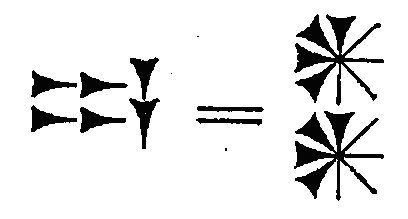
... Kochab was at
the opposite side of
the pole compared to
Polaris, and thus
also at the opposite
side in the right
ascension circle. It
meant Kochab was not
very far from the
Full Moon when the
Sun was at Polaris
...
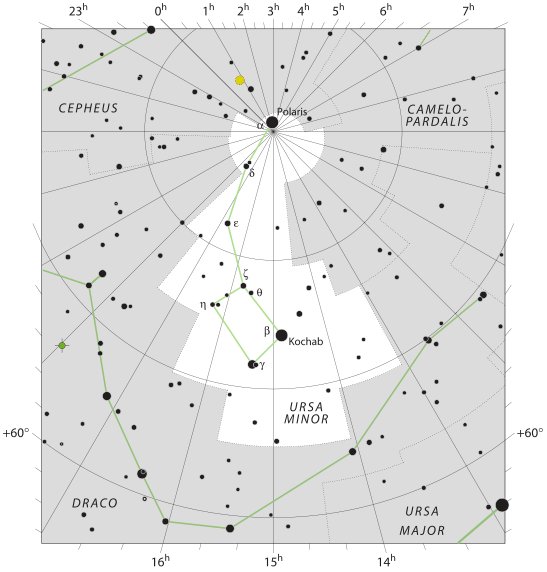 |
|
Nov 1 |
2 |
3 (*227) |
4
(308) |
5 |
6 (310) |
|
°Oct 28 |
29 |
30 |
31 (*224) |
°Nov 1 |
2 |
|
'Oct 5 |
6 |
7 (*200) |
8 |
9 (282) |
10 |
|
"Sept 21 |
EQUINOX |
23 (*186) |
24 |
25 (268) |
26 |
From Situla to 'April
10 (100) in Roman times there were 70 days:
|
 |
69 |
 |
|
Gb2-23 (278) |
Gb4-28 (348) |
|
'Jan 30 (395) |
'April
10 (465) |
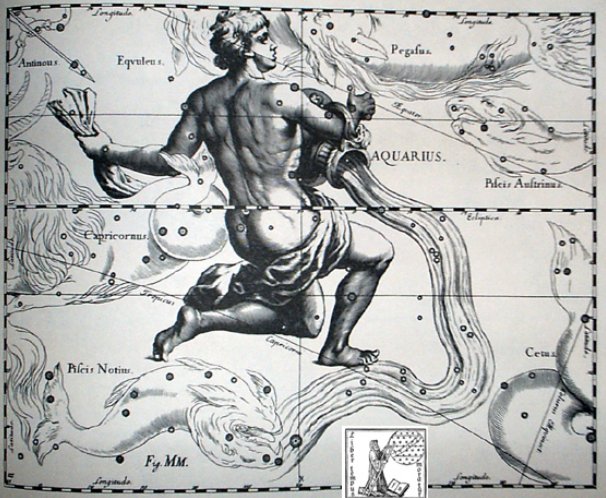
On side b of the C
tablet there are 348
glyphs, and counting 70
glyphs backwards we will
reach Cb12-4 (278):
|
 |
413 = 14 * 29½ |
 |
|
Gb2-1 (256) |
Cb12-4 (392 +
278) = 414 - 256 |
|
DRAMASA
(*320.0) |
*304 + *16 =
*320 |
20h (*304.4) |
|
9h (*137.0) |
*137 - *121 = *16 |
NAOS (*121) |
Like Dramasa the
position of Argo Navis
was very far down (or
very high up as regarded
by an observer on Easter Island).
.jpg)
.jpg)
The figure at the stern
of the sinking canoe can
be recognized as the
Earth Turtle:

...
It is an interesting
fact, although one
little commented upon,
that myths involving a
canoe journey, whether
they originate from the
Athapaskan and
north-western Salish,
the Iroquois and
north-eastern Algonquin,
or the Amazonian tribes,
are very explicit about
the respective places
allocated to passengers.
In the case of maritime,
lake-dwelling or
river-dwelling tribes,
the fact can be
explained, in the first
instance, by the
importance they attach
to anything connected
with navigation:
'Literally and
symbolically,' notes
Goldman ... referring to
the Cubeo of the
Uaupés basin,
'the river is a binding
thread for the people.
It is a source of
emergence and the path
along which the
ancestors had travelled.
It contains in its place
names genealogical as
well as mythological
references, the latter
at the petroglyphs in
particular.' A little
further on ... the same
observer adds: 'The most
important position in
the canoe are those of
stroke and steersman. A
woman travelling with
men always steers,
because that is the
lighter work. She may
even nurse her child
while steering ... On a
long journey the
prowsman or stroke is
always the strongest
man, while a woman, or
the weakest or oldest
man is at the helm
...
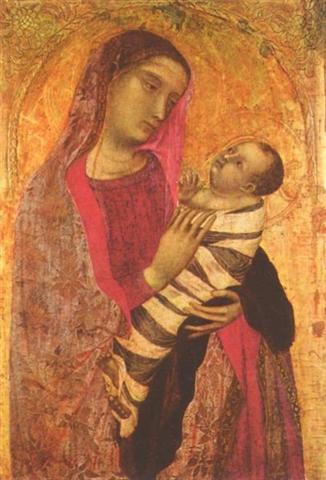
|




.jpg)









.jpg)
.jpg)

